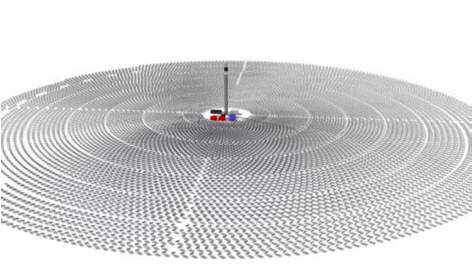The ACT government says it has been swamped by thirty submissions representing 967MW of potential solar plus storage capacity in response to its call for interest on its next generation solar program.
ACT energy minister Simon Corbell says the huge response signifies the potential opportunity for next generation solar in Australia. The ACT government intends to commission around 50MW of capacity, in what will likely be the first large scale solar plus storage project, or projects, in Australia.
Corbell, however, said the government is yet to decide whether to implement an auction program, which it has used to great success with its first 40MW of solar capacity and 200MW of wind capacity, or negotiate a feed in tariff directly with some participants.
This reflects the varying nature of the technologies proposed, and their likely costs, and their readiness for deployment, either individually or in combination. It could mean that the ACT – if it doesn’t follow an auction process – may make a technology choice and work out the best way to go forward with that.
The applications received include a range of options, including solar PV plus battery storage, solar PV combined with pumped hydro, and a range of solar thermal plus storage options, possibly including the likes of solar tower developers Abengoa (Spain), Solar Reserve (United States) and Vast Solar (Australia).
“We have received a tremendous response, reflecting significant industry demand for new opportunities,” Corbell said in a statement. He later told RenewEconomy that the response was “better than expected.”
Corbell said the ACT Government wanted to underpin the widespread commercial development and deployment of next generation solar, while driving the development of the renewable energy industry in the ACT.
“We will now take time now to assess all of those and make decisions on how we proceed,” Corbell told RenewEconomy. This included the potential of direct negotiations with some proposals.
“We are simply keeping our options open. The legislation allows either approach,” he said. He expected his team to report back in a month, after which he will decide how to proceed.
Like the recent wind auction, which saw three wind farms in Victoria and South Australia awarded contracts to supply energy to the ACT, the solar project is unlikely to be built within the capital territory, particularly if the winner is a solar thermal project. That is likely to be built in western NSW, where solar resources are better.
The new labor government in Queensland is also considering a solar auction, to develop a 30MW project, while South Australia is mulling its options in response to the decision by Alinta Energy to close its coal fired generators in Port Augusta, and the local push for solar towers plus storage.
“Solar generation is a mature technology that can be cost competitive with grid electricity for both residential and commercial consumers,” Corbell said.
“Intermittency and reliability of supply remain a key challenge to widespread adoption. Next generation solar, combining solar generation and energy storage technologies, seeks to address those key challenges.
“This is an important time for renewable energy globally. Solar and wind resources are growing rapidly. But for truly widespread adoption and to decarbonise our economy, renewable energy needs to be available as and when we need it, day or night.”
“Next generation solar, combining solar generation with energy storage, will be crucial to the future success and widespread take-up of renewable energy, and will position the ACT at the forefront of this growing industry as an internationally recognised centre for renewable energy innovation and investment.”
Information gathered through the EOI process will be used by the ACT Government to inform the future next generation solar initiative which may include direct grant of a feed in tariff or a reverse auction process.











